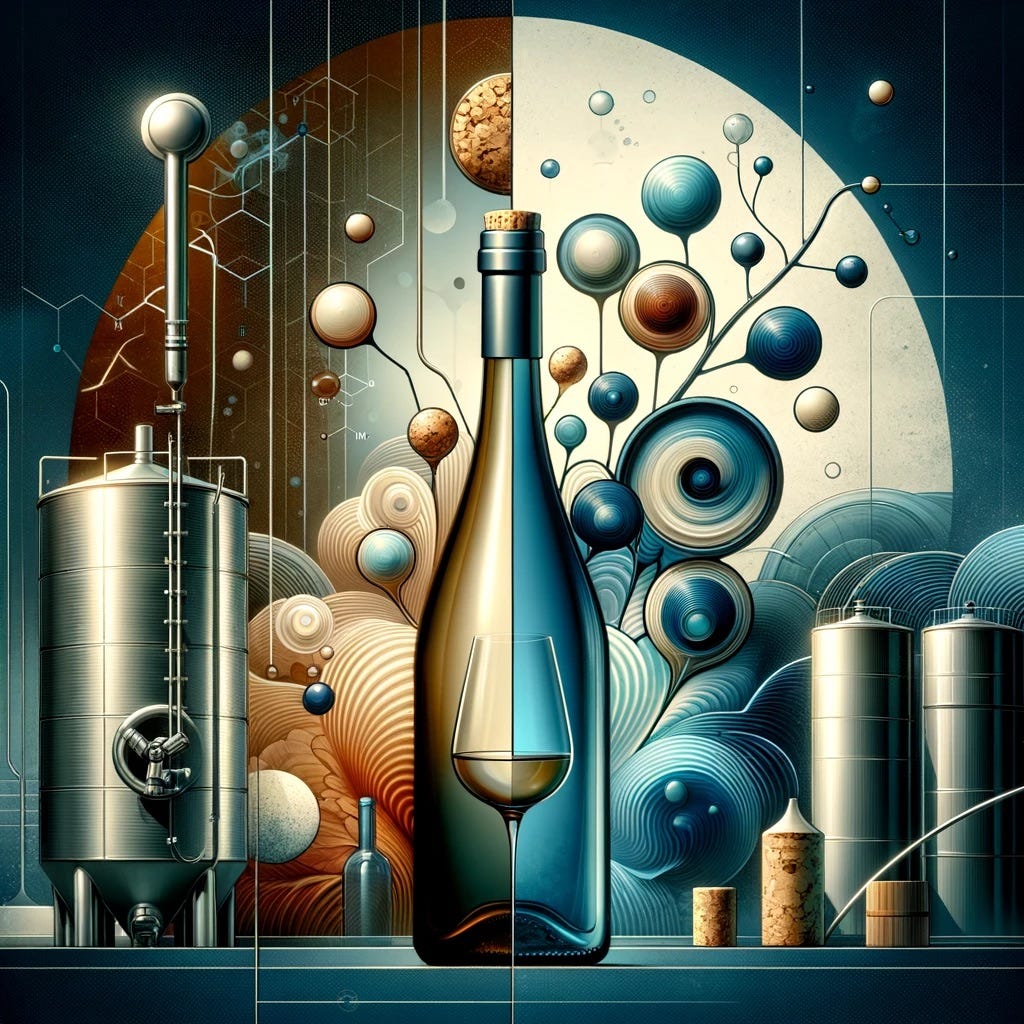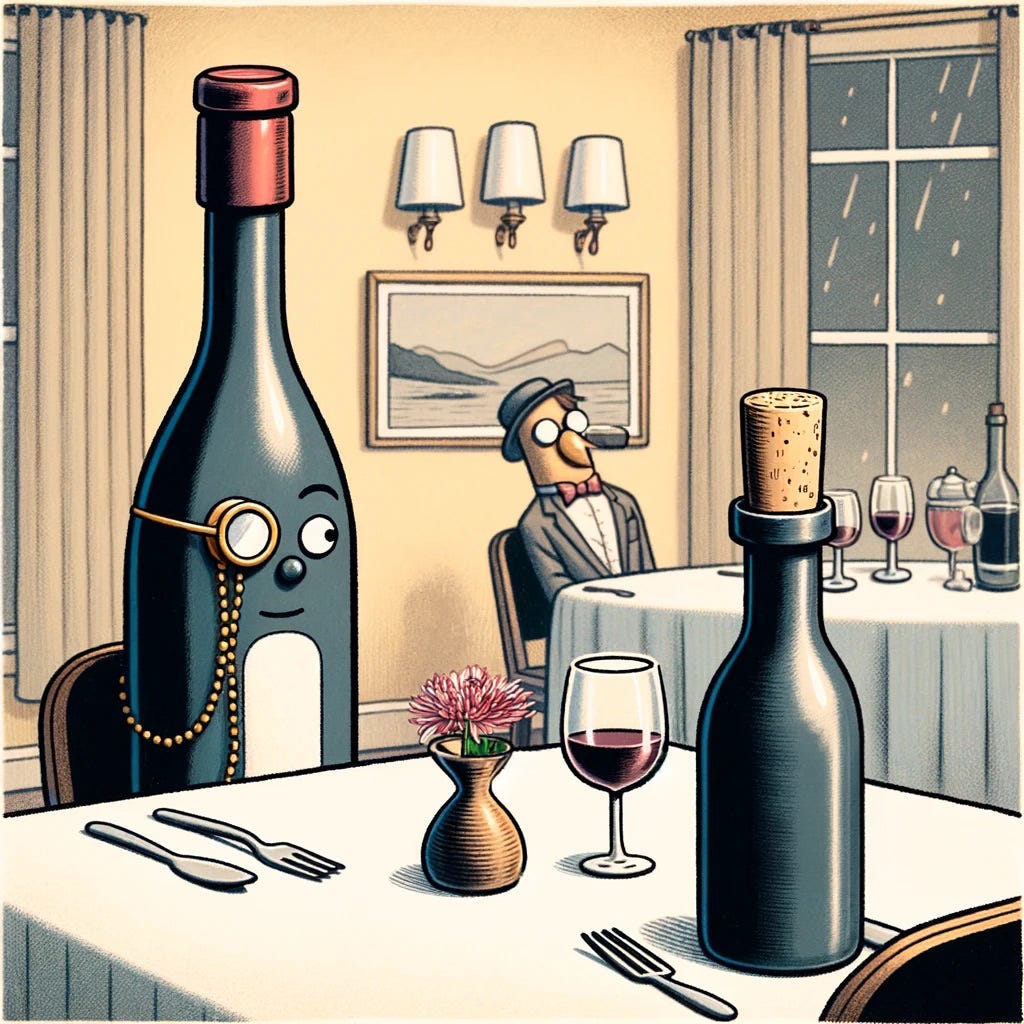NAPA VALLEY, Calif. — One of the most pleasant ways to enjoy a bottle of wine is to make sure that it suits your taste and is chosen for the occasion. The quality of the product being poured at a beach party is far less important than it is in a quieter, more reserved setting.
Most people appreciate a classic chardonnay paired with a beautifully prepared plate of seafood, a dry or off-dry gewürztraminer matched with Thai food, or a chilled white or rosé wine to cool the brow on a hot patio. This last suggestion seems perfectly appropriate for the beginning of summer, a multi-month period during which lots of cold wine will be explored. In most settings there is no particular need to be critical. The wine can range from the driest French offerings to sweet rosés served as cold as possible. Very few of these wines are candidates to be critiqued. They’re simply for instant enjoyment.
But once good white or rosé wines are brought to the dining hall, we become more demanding. It is here where some people begin to take note of the subtleties in some of the best wines that we hope will pair with food. And here is where I often find subtle problems, especially with aromas.
Most people consume their white wines in the wrong way, in my opinion. Part of the reason is the convenience factor we find with wines sealed with a screwcap, a popular quaffing-wine closure. Most of us are eager to get to such wines. Caps allow quicker access — no looking for a corkscrew. It is far easier to open capped wine, but too many of us immediately pour the wine and sip. Doing so might compromise crucial aspects of quality.
In fact, we may be missing two things by pouring immediately. But before we get to problems, a bit of history.
Historically white wine was never really part of the wine-consuming culture that dates back thousands of years. To make an excellent white wine calls for capturing delicate fruit aromas. But most of the vessels used in the earliest days of wine were made from earthenware or clay, which imparts a curious aroma to most wines. Without modern technology, most wines had a level of oxidation that simply robbed white wines of most of the charms that they might have had. Red wines, by contrast, were easier to make because the color extracted from the grape skins had antioxidant tannins, so red wines could be protected from oxidation much more easily.
Also, white wines often ended up with small amounts of unfermented sugars that the inefficient yeasts did not process. And when any sugars and yeasts remained in white-wine bottles, there was always the risk of the fermentation resuming in the bottle, which meant that stability and consistency were in possible danger. Imagine exploding corks.
Around the turn of the last century, wine-lovers considered some of the world’s best wines to be German rieslings that were dry. Roughly 125 years ago, these wines sold at auctions in Europe’s major cities for exalted prices. One reason they were so highly prized was that they typically had high acidity and low pH levels, which meant that they were more stable than many other white wines of the period. The popular Blue Nun off-dry white wine from Germany began with the 1921 vintage and became extremely popular worldwide between 1960 and 1985.
The modern era of white-wine making probably dates from about 1950, after major improvements were developed in the areas of stainless-steel fermentation tanks and extremely efficient filtration systems. These improvements allowed white wines to be made that were fresh and stable. High-quality filters, in particular, meant that wine could be made without any yeast remaining in the bottle. Refermentation was all but eliminated. It is believed that the so-called sterile filters were invented in the 1940s during the search for techniques to make the hydrogen bomb.
White wines are better than they have ever been. Methods have improved significantly in the growing of white-wine grapes as well as protecting grape juice from oxidation at harvest time. Today almost all fine wineries have stainless-steel tanks that can be chilled down to protect the white wine’s juice as it goes through fermentation. Cold fermentations can capture fruit aromas more reliably.
However, making white wines with such painstaking protection can create minor aromatic problems that can be exacerbated by the use of screwcaps. Caps do a superb job of creating near-hermetic seals, but with almost no oxygen in the bottle, the wine is in a “reductive” state, without any air, a condition that doesn’t allow for any aromatic imperfections to dissipate.
But slight aromatic aberrations can be quickly cured by consumers. Very young white wines, regardless of whether sealed with a cork or a cap, frequently benefit from a minute or two of aeration. Many young wines can be noticeably improved by giving them some air.
One suggestion is simply to decant a young white wine for about 10 minutes before serving. This allows a wine’s extraneous odors to dissipate. Obviously, such a tactic might actually be harmful to mature white wines, many of which could be damaged by too much oxygen.
Then there is the question of what temperature is best to enjoy a white wine. Far too many white wines are served extremely cold, and the colder the liquid, the less aromatic the wine will be. Since the most charming attribute of a white wine is its aroma, serving it ice cold can rob it of some or all of its magic.
This is truer of fine chardonnay and sauvignon blanc than it is of aromatic varieties such as riesling and gewürztraminer. High-quality chardonnays and sauvignon blancs probably are best served at about 48 F to 58 F. Better-quality aromatic wines usually are best about 40 F to 50 F. But most domestic restaurants notoriously serve all white wines at about 40 F, which I consider to be far too cold for the wine to be enjoyable.
Most rosés are best chilled and kept cool, but — again — too much chilling robs the wine of its fruit. And while there is no need to get nerdy-specific about this, if you want to be specific, there are numerous thermometers intended to determine a bottle of wine’s exact temperature.
(Purists surely will wince at my tactic, but when any wine has far too much alcohol for me, I often add a small bit of ice to my glass to dilute the alcohol and keep the wine as cool as it should be.)
Another tactic I employ for white wines is to protect all clear glass wine (and beer) bottles from exposure to any form of light. Clear glass bottles, called “flint” in the industry, frequently are designed so that you can see the color of the wine. That’s not a bad idea, but some of these bottles are not designed to protect the wine from exposure to ultraviolet light. Clear glass bottles allow a photochemical reaction to occur that will usually spoil the wine. Such wines smell “skunky.”
I have seen this occur at several winery-hosted events that were staged outdoors under the sun. Just a few minutes in direct sunlight can create this effect. At one Napa Valley winery’s alfresco luncheon 20 years ago I smelled the skunky character in eight different bottles of the winery’s sauvignon blanc. It had been put on tables in direct sun. All had to be removed and replaced with new bottles that then were shielded from direct sunlight.
This problem is especially noticeable when a clear glass bottle is displayed in a retailer’s refrigerator case illuminated by fluorescent bulbs. The photochemical reaction creates what is known as a “lightstruck” character, with an aroma that doesn’t aerate off by decanting a wine.
I’m a big fan of German rieslings, almost all of which are sold in green or brown glass to avoid lightstruck. Almost no German riesling is bottled in clear glass. This is such a widespread problem in the beer industry that most beer producers now use brown glass bottles or glass with a tint that blocks the photochemical reaction from occurring.
The famous Champagne Louis Roederer Cristal, one of the wine world’s greatest treasures, traditionally is bottled in a clear glass bottle. It is widely marketed in the United States with a cellophane wrapper that is intended to protect the liquid from lightstruck character, including the potentially damaging fluorescent bulbs in many retail stores. On occasion I have seen some stores remove the cellophane. I avoid such bottles.
If today’s story captured your interest, explore these related articles:
Dan Berger's Wine Chronicles: Aged Red Wines Are Still 'Fine'
Wine in Crisis: Navigating Prohibitionist Waves and Market Shifts
Dan Berger's wine chronicles: The evolution of wine in a warming world
Dan Berger has been writing about wine since 1975.







I want to know which grapes are in the wine, the vintage of the wine, the place of growth and the place of mfg. That's what labeling means to me. Avoid any bottle that is displayed in a window or under a skylight.
As always, Dan Berger’s writing is clear, informative, and spot-on. So glad his work is featured at NVF!